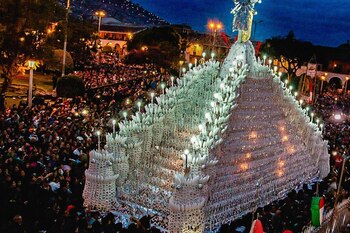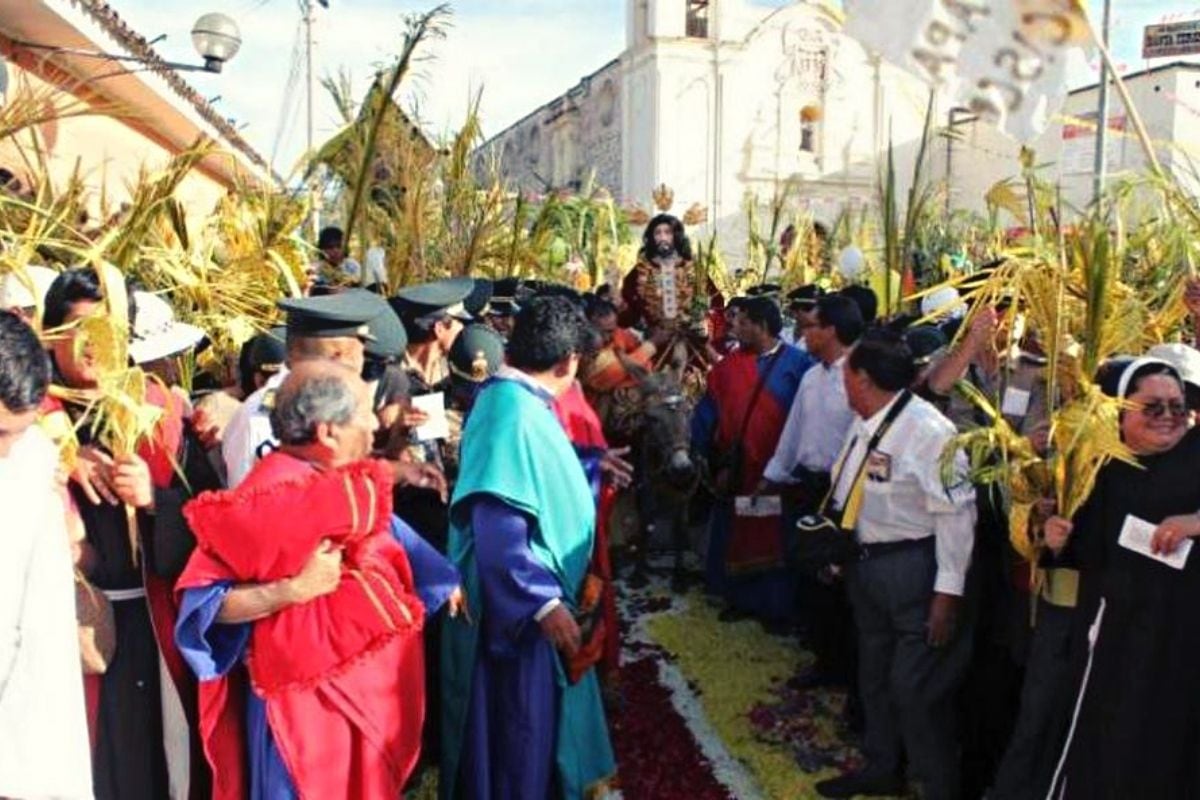
Ayacucho is one of the regions that most celebrates Holy Week. The fervor shown during the celebration of this date has undoubtedly echoed nationally, regionally and internationally.
This department, belonging to the Sierra area of Peru, has 33 churches and on the date of Holy Week it shows its religious power, being recognized as the greatest holiday Christian religious of Peru and the second most imposing in the world, after which it takes place in Seville, Spain.
Everything that takes place in that city is one of the largest cultural manifestations of the Inca country, combined with a symbol of Andean mysticism and fervor that identifies the Ayacucho people.
AYACUCHO AND HOLY WEEK
Peru prior to colonization by the Spaniards, they already had a clear Andean ancient worldview and their own beliefs. With the arrival of the Spaniards and the conquest towards the Peruvians, religious customs and beliefs changed, that is, there was a synergy between both ideologies, leading to the creation of an identity of the Ayacucho population and Peru.
The celebration prior to the pandemic was a real hype, but it was suspended for two years in order to reduce the spread of COVID-19. This year Ayacucho opens its doors, completely renovated, respecting biosafety protocols to exhibit the demonstration of the greatest religious fervor in Peru.
EARLY CELEBRATION
A very important fact that makes Ayacucho the greatest exponent of faith on this date is that they celebrate the Easter from days before. That is, this holiday usually begins on Palm Sunday, but in Ayacucho it is celebrated since the previous Friday. That day there is a night procession, from the church of La Magdalena, two highly venerated images: the Sorrowful Virgin and the Lord of Agony. This is very rare in many places.
Then follows the Saturday of the Passion. This day they bring yellow and green palms and perform a procession of the Lord of La Parra, named because Christ carries a bunch of grapes in his hand.
And finally comes the day when Holy Week officially begins and it is Palm Sunday, the population gathers in the cathedral basilica very early (07:00 a.m.) for the blessing of the bouquets of flowers and palms made with olive leaves. These are given to the children, who will make a triumphant entrance to the chapel.

Everyone enters the Plaza de Armas to head to the cathedral basilica. There the sculpture of Christ is disassembled and enters the temple. During their journey, the companions sing songs and vivas in honor of the Messiah, beating the olive palms.
Holy Monday begins with a march but in the evening. Leading will be the image of Jesus del Huerto, from the temple of La Buena Muerte. The anda is adorned with corn, fruit, olive bouquets and a large number of candles.
The next day, Holy Tuesday, commemorates the arrest and trial of Christ. The Lord of the Judgment leaves in procession, who leaves from the church of Bitterness. The image has his hands tied and exhibits multiple wounds. On its way, it stops at fourteen stations that make up the way of the cross. The faithful who participate in the tour sing religious songs in Quechua and Spanish.
On Saturday of Glory the fun activities begin. This day is Easter Bull.
There are chamizo fires and as we already mentioned Pascua Toro, which is taken by the tourist population as a day to drink alcohol, dance to the rhythm of typical songs in the main square and run to the sound of loose bulls in the square. However, the real story is different, these bulls were moved down the street to be given away to nursing homes. To date, the appearance of bulls in this celebration has been canceled, due to the mistreatment they may suffer before, during and/or after the event.
“Human towers” are also held in the midst of the hubbub of tourists. A very important point to keep in mind is that tourists must respect local customs.
BELLEZA CULTURAL
During Easter, the faithful believers use wax candles and the creation of these has undergone a forceful evolution.
This ornamentation is produced according to the architectural structure of each band. This is expressed in a specialized work that is carried out in family workshops led by master craftsmen who are known as ornists, alluding to their work of decorating the processional walks.
The art of the ceramics in Ayacucho was declared a Cultural Heritage of the Nation, on January 27, 2020, as it is an expression of ephemeral traditional art which expresses the deep devotion and identity of the Ayacucho people.
KEEP READING
Últimas Noticias
Debanhi Escobar: they secured the motel where she was found lifeless in a cistern
Members of the Specialized Prosecutor's Office in Nuevo León secured the Nueva Castilla Motel as part of the investigations into the case

The oldest person in the world died at the age of 119
Kane Tanaka lived in Japan. She was born six months earlier than George Orwell, the same year that the Wright brothers first flew, and Marie Curie became the first woman to win a Nobel Prize

Macabre find in CDMX: they left a body bagged and tied in a taxi
The body was left in the back seats of the car. It was covered with black bags and tied with industrial tape
The eagles of America will face Manchester City in a duel of legends. Here are the details
The top Mexican football champion will play a match with Pep Guardiola's squad in the Lone Star Cup

Why is it good to bring dogs out to know the world when they are puppies
A so-called protection against the spread of diseases threatens the integral development of dogs




